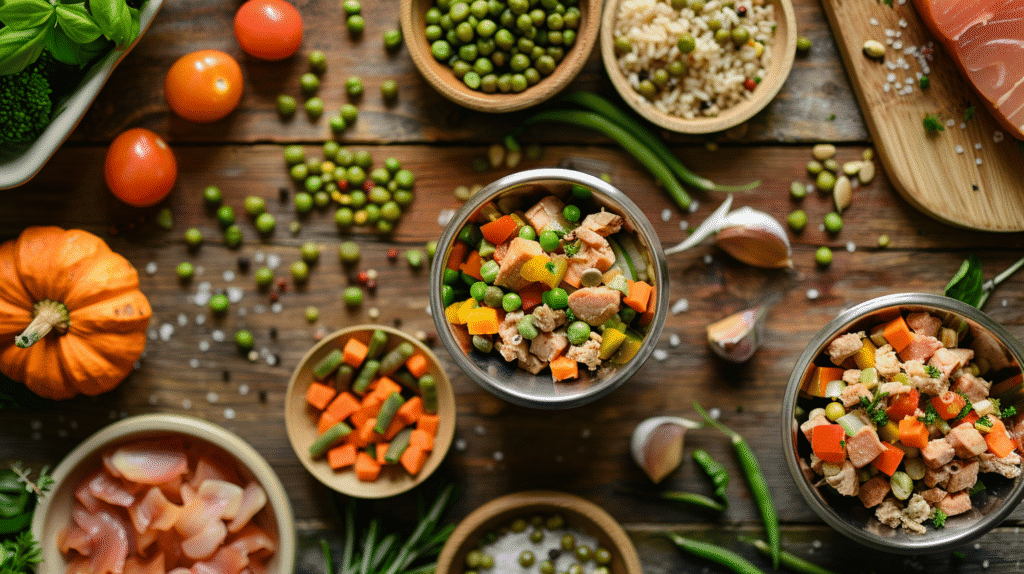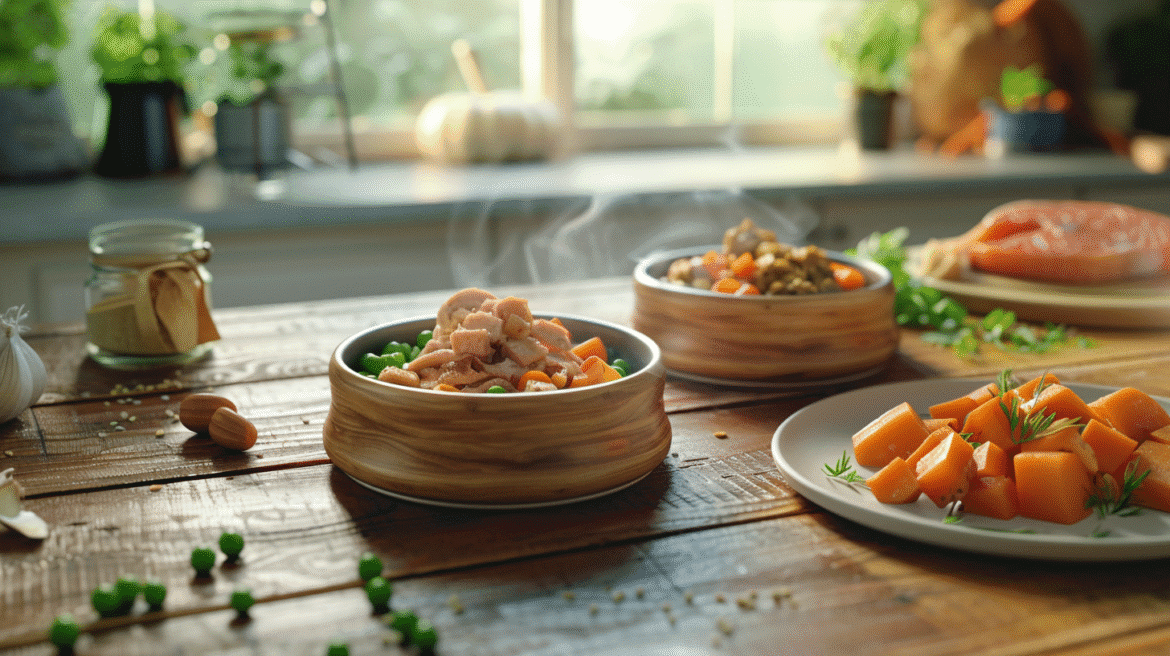Introduction
Pet owners are becoming more conscious about what goes into their furry friends’ bowls. With concerns about artificial preservatives, fillers, and low-quality ingredients in some commercial pet foods, homemade pet meals have become increasingly popular. Not only do they allow you to control the ingredients, but they can also be more nutritious and tailored to your pet’s needs.
However, making homemade pet food isn’t as simple as giving your dog or cat some leftovers. Pets have unique nutritional requirements, and their meals must be balanced to keep them healthy. In this guide, we’ll share the benefits of homemade meals, essential nutrients for pets, and easy, nutritious recipes you can make at home.
Why Choose Homemade Pet Food?
- Control Over Ingredients
You know exactly what’s going into your pet’s food—no hidden additives or low-quality fillers. - Customizable for Dietary Needs
If your pet has allergies, sensitivities, or medical conditions, homemade food allows for tailored recipes. - Freshness
Homemade meals are made from fresh ingredients without long storage times or preservatives. - Bonding Experience
Preparing meals for your pet can strengthen the human-animal connection.
Nutritional Basics for Homemade Pet Food
When preparing meals at home, it’s essential to ensure that your pet gets a balanced mix of proteins, fats, carbohydrates, vitamins, and minerals.
Dogs
- Require a mix of animal protein, healthy fats, and digestible carbs.
- Beneficial supplements: Omega-3 fatty acids, glucosamine, probiotics.
Cats
- Obligate carnivores—require high animal protein, moderate fat, and very low carbs.
- Must have taurine (an amino acid essential for heart and eye health).
Safe Ingredients for Pets

Proteins: Chicken, turkey, beef, lamb, salmon, tuna, eggs.
Vegetables: Carrots, green beans, sweet potatoes, pumpkin, peas, zucchini.
Carbohydrates (dogs only): Brown rice, oatmeal, quinoa, barley.
Healthy Fats: Fish oil, flaxseed oil, chicken fat, olive oil (in small amounts).
Foods to Avoid
Some human foods can be toxic to pets. Avoid:
- Chocolate
- Grapes & raisins
- Onions & garlic
- Macadamia nuts
- Avocado (for dogs; some cats may tolerate small amounts)
- Xylitol (artificial sweetener)
Homemade Pet Food Recipes
1. Chicken & Vegetable Stew for Dogs
Ingredients:
- 1 lb chicken breast, diced
- 1 cup carrots, chopped
- 1 cup green beans, chopped
- 1 cup sweet potatoes, cubed
- 4 cups low-sodium chicken broth
Instructions:
- In a large pot, cook chicken until no longer pink.
- Add vegetables and broth.
- Simmer for 30 minutes until vegetables are tender.
- Cool before serving. Store in fridge for up to 3 days.
2. Salmon & Pumpkin Delight for Cats
Ingredients:
- 1 cup cooked salmon (boneless)
- ½ cup pumpkin puree (no added sugar)
- 1 egg, boiled and chopped
Instructions:
- Mix all ingredients in a bowl.
- Serve fresh or refrigerate for up to 2 days.
3. Beef & Rice Dinner for Dogs
Ingredients:
- 1 lb lean ground beef
- 1 cup brown rice
- 1 cup spinach, chopped
- 2 carrots, shredded
- 4 cups water
Instructions:
- Cook beef in a pan until browned.
- Add rice, vegetables, and water.
- Simmer until rice is cooked (about 30 minutes).
- Let cool before serving.
4. Chicken & Tuna Protein Boost for Cats
Ingredients:
- ½ cup shredded cooked chicken
- ½ cup canned tuna (in water, drained)
- 1 tsp fish oil
Instructions:
- Mix all ingredients together.
- Serve immediately.
Tips for Homemade Pet Food Success
- Consult Your Vet First – Homemade diets must be balanced, so get professional advice.
- Add Supplements When Needed – Taurine for cats, calcium, and omega oils for both.
- Portion Control – Overfeeding can lead to obesity.
- Introduce New Foods Gradually – Prevents stomach upset.
Sample Feeding Schedule
Dogs:
- Small breeds: 2 meals/day.
- Large breeds: 2 meals/day with more protein.
Cats:
- 2–3 small meals/day, focusing on protein.
Signs of a Healthy Diet
- Glossy coat
- Bright eyes
- High energy levels
- Regular, firm stools
- Healthy weight
Conclusion
Making homemade pet food can be a rewarding way to ensure your dog or cat eats healthy, fresh, and balanced meals. By following nutritional guidelines, choosing safe ingredients, and working with your vet, you can give your pet the best diet possible—made with love in your kitchen.
